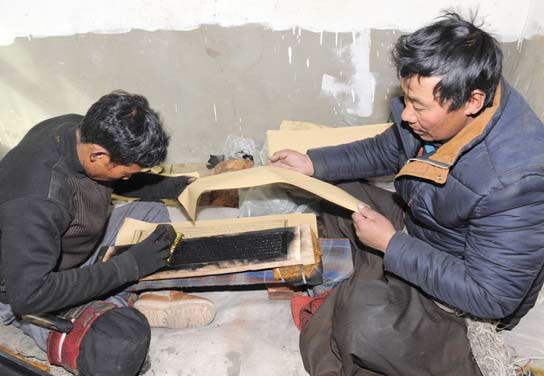Handmade in the Himalayas
Nyemo county, Lhasa, has a pivotal role in the history of Tibetan civilization.
Not only is it the hometown of Thonmi Sambhota, regarded as the creator of the Tibetan script, but it is also the birthplace of Tibetan incense, paper and engraving, known as the "three treasures of Nyemo".
Now, these crafts have made considerable progress as artisans work on developing them. As a result, not only have these crafts become a means of livelihood for local farmers and herdsmen, but they have also become carriers of Tibetan culture.
Nyemo paper is completely handmade. Produced since the seventh century, it is made of a root called Herba gelsemii elegantis, found in the Himalayas 1,980 meters above sea level.
After digging up the poisonous root, craftsmen strip its brown skin, mash up the root and boil it in a pot for half a day. They stir the paste repeatedly until it becomes a pulp. The paper is known for its acid-free and anti-corrosive characteristics.
Nyemo incense is used mainly for sacrificial ceremonies, but it also is used to prevent influenza. Its ingredients include saffron, sandalwood, Chinese usnea and borneol.
Pusum in Nyemo county is also known for plates engraved with figures or pictures that are used in Tibetan Buddhist rituals.
|
Craftsmen print sutra using traditional skills. |



















